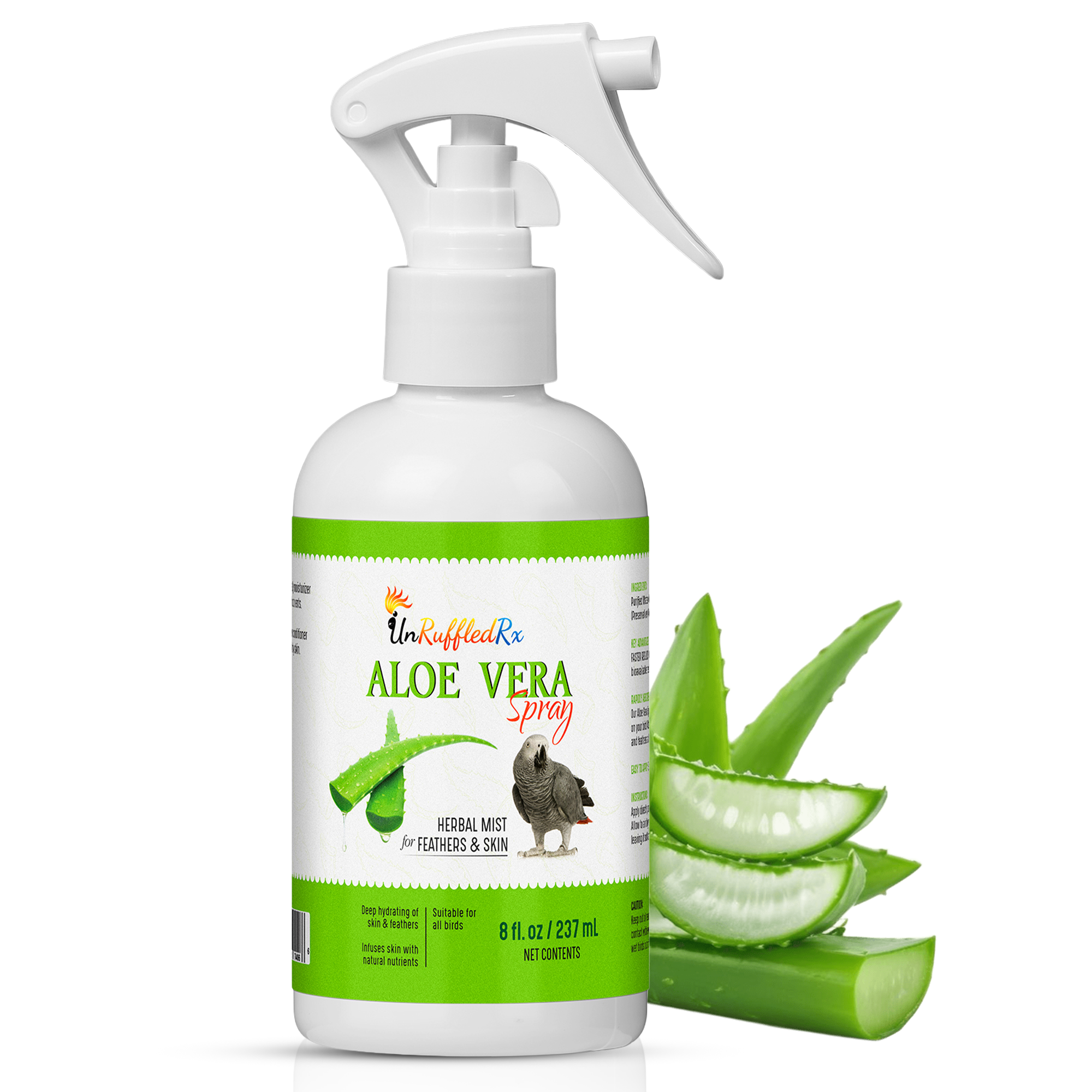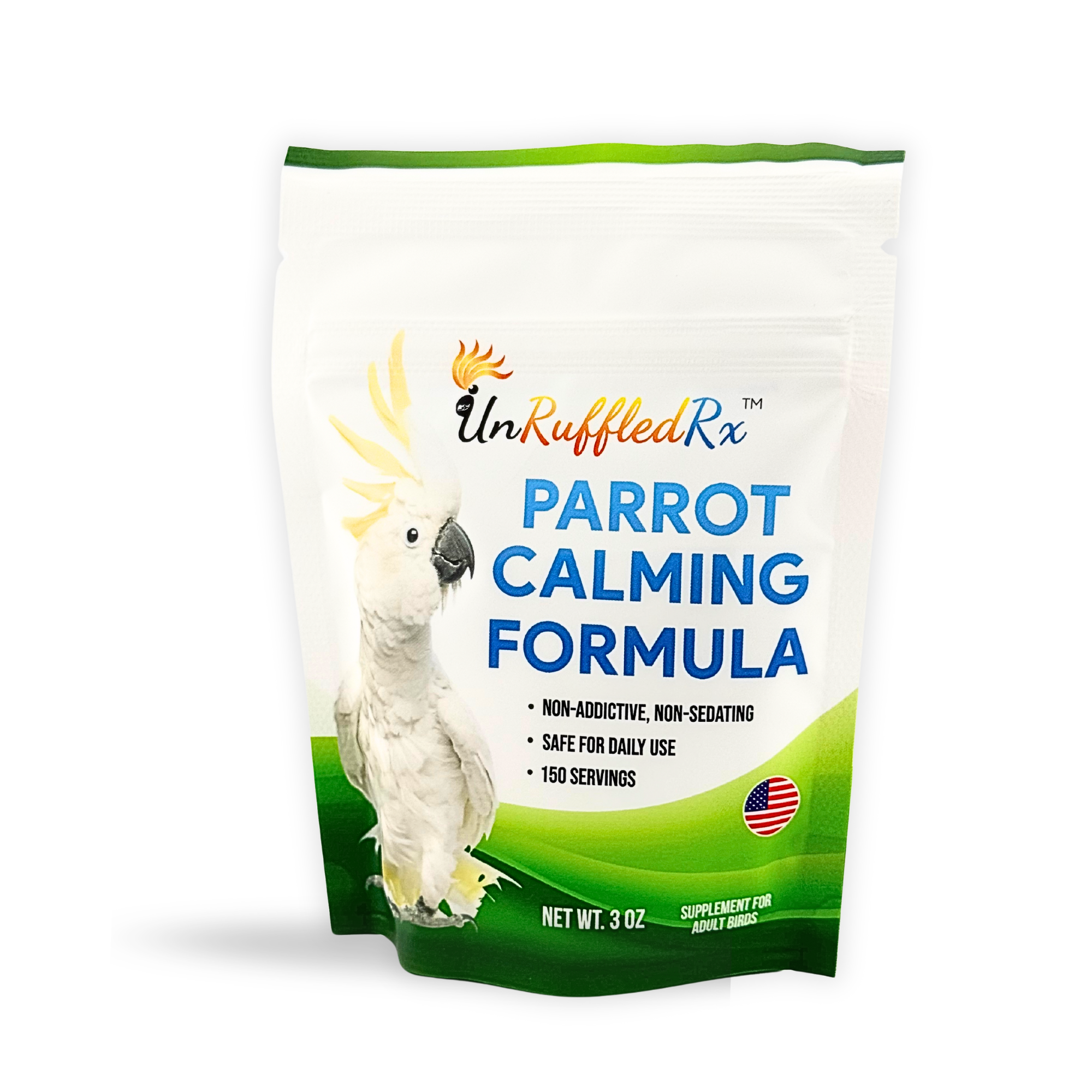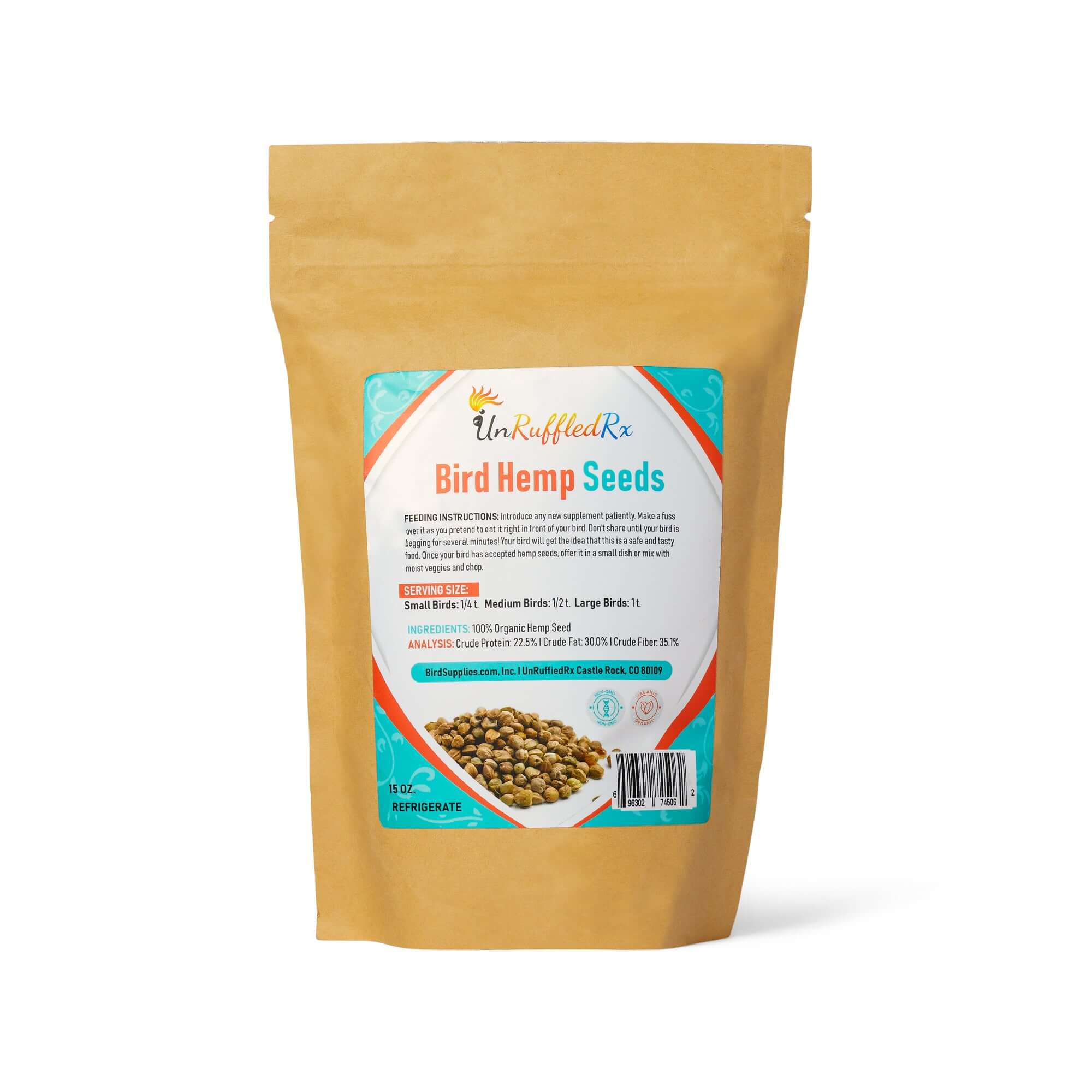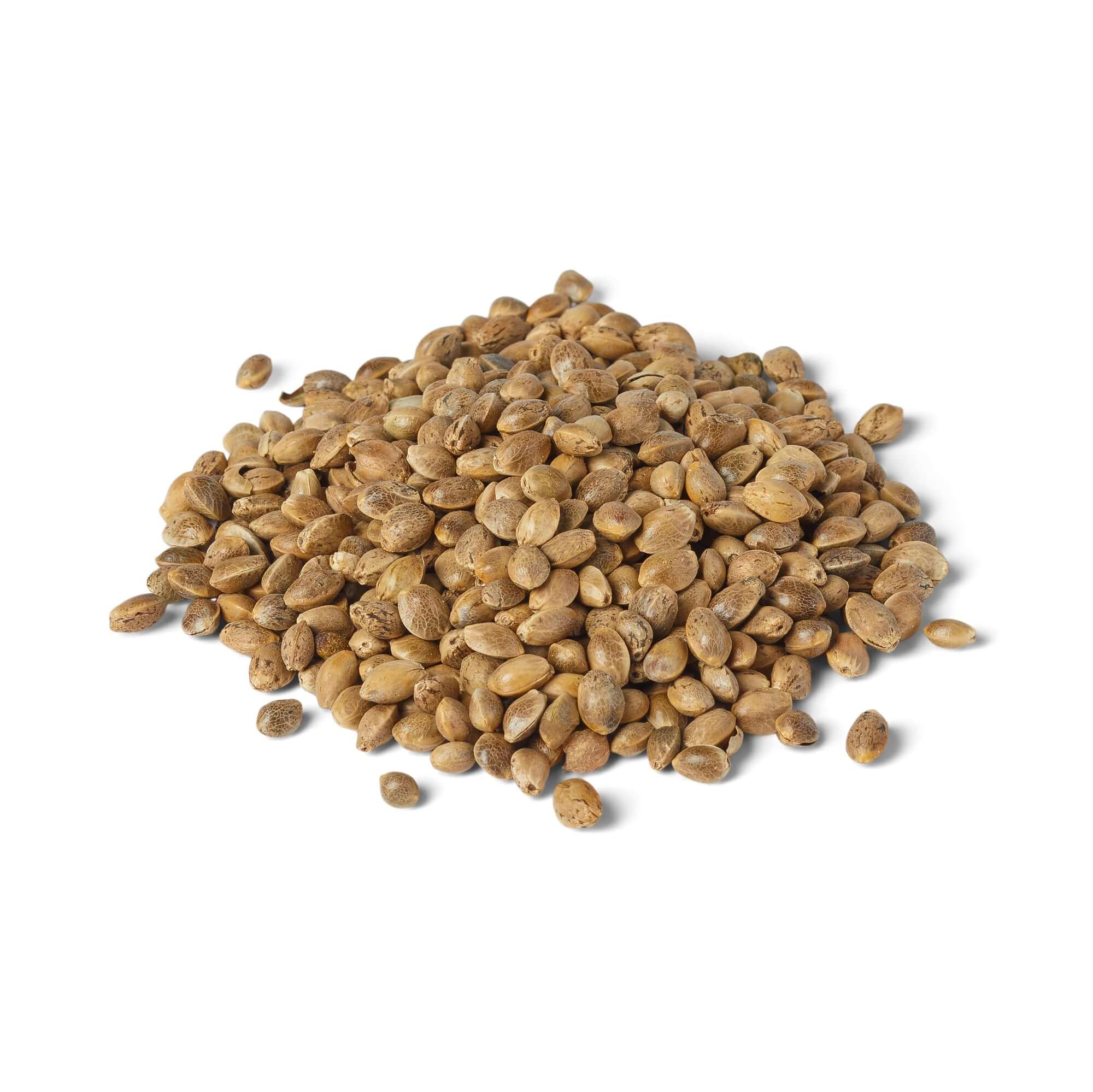Table of Contents
- Handling During Different Life Stages
- Learning To Read Bird Body Language
- How To Pet a Bird
- Perching On Your Shoulder
- Teaching Your Bird To Step Up
- How To Restrain a Bird
- Better Ways To Interact With Your Bird
Want to know the secret to safely petting your bird without harming their delicate air sacs? It’s all about gentle, mindful strokes that keep your feathered friend relaxed and happy. Ready to level up your bird bonding game? Let’s dive into the best ways to pet your bird safely and lovingly!
Handling During Different Life Stages
Babies
Handling baby birds, especially those fresh from a pet store, requires a gentle and patient approach. When they first arrive at their new home, it's essential to create a calm environment. Use soft tones and slow movements to minimize stress, and always handle your little feathered friend with care. Positive reinforcement, offering treats, like a nibble of millet for behavior that you'd like to see more of, can help them feel safe and secure in their new surroundings.
As your baby bird grows, it's important to start introducing them to essential life skills. Encourage activities like bathing and preening, which not only keep their feathers in good condition but also strengthen your bond. Start teaching them new skills, like stepping up onto your finger. These early interactions set the stage for a healthy, happy bird who feels comfortable and confident being handled.
Juveniles
Juvenile birds are at a playful and curious stage, ready to learn behaviors that they would typically pick up from their parents in the wild. This is the perfect time to reinforce good habits, such as regular bathing and meticulous feather care. These routines not only keep them healthy but also help them learn important social skills and manners. Engage them with a variety of toys to stimulate their minds and encourage physical activity, mirroring the learning they would undergo naturally in the wild.
Handling juvenile birds involves understanding and respecting their unique needs as exotic pets. While it's important to spend quality time with your bird daily, this doesn't always mean extensive handling. Many birds may not seek physical touch, and over-handling can sometimes lead to behavioral issues later on. Focus on building a bond through consistent training using positive reinforcement that respect their space and autonomy. This approach helps foster trust and ensures your bird develops into a well-adjusted adult, comfortable both with you and in their environment.
Adults
When birds reach adulthood, understanding the hormonal implications of petting becomes crucial. Petting them the wrong way can cause unnatural hormone levels, leading to physical and behavior problems
To maintain a happy and healthy relationship with your adult bird, it's important to recognize their need for personal space and respect their boundaries. Instead of frequent petting, focus on other forms of interaction like training, playing with toys, or simply spending time together. These activities can help keep your bird mentally stimulated and emotionally satisfied, without triggering unwanted hormonal responses.
Raising a bird from an adorable baby to a majestic adult parallels the journey of parenting. In their early days, baby birds, much like human infants, need a soft, nurturing touch and a secure environment where they can grow and thrive. We start with the basics: teaching them hygiene and proper eating, creating a foundation of comfort and love.
As birds grow into their juvenile phase—similar to toddlers and young children—we guide them through more structured lessons. This stage is all about fostering independence and confidence through play and social interactions, just like guiding a child through their formative school years. We focus on manners, respect, and self-care, ensuring they develop into well-adjusted individuals.
When birds reach adulthood, our role evolves into one of respect and guidance, mirroring how we interact with older children or young adults. It's crucial to understand that too much handling can lead to stress and behavioral issues. Here, we step back and listen, ensuring that we don't force behaviors through punishment but rather teach them skills that will help them be happy members of our family.
Learning To Read Bird Body Language
Reading bird body language is a crucial skill that can greatly enhance the trust between you and your feathered companion. By observing and interpreting the subtle cues and behaviors of your bird, you can better understand their feelings and needs. This understanding allows you to respond more appropriately to their comfort levels, helping to build a strong foundation of trust.

Different bird species—and even individuals within the same species—express themselves in unique ways. Recognizing these variations is key to accurately gauging their moods and intentions. By tailoring your interactions based on these cues, you show respect for their boundaries and preferences, which is essential in nurturing a trusting relationship.
Forcing birds to engage in activities they are not comfortable with can undermine trust and lead to stress and behavioral issues. Conversely, allowing birds to choose their interactions, even if cued or motivated by treats, fosters a sense of control and security. This voluntary engagement is much more effective in building a deeper, more trusting bond with your bird.
Some birds, particularly cockatoos, are highly sociable and often seek physical interaction. These affectionate birds may beg for petting by nuzzling against you or stretching their necks to invite a gentle stroke. Recognizing and responding to these cues can deepen your bond, but it’s crucial to watch for signs of overstimulation or dependency to keep interactions healthy and enjoyable.
How To Pet a Bird
When petting a parrot, it’s best to focus on areas that don’t induce hormonal behavior. Safe zones generally include the head, neck, and sometimes the feet. Avoid petting your parrot on the back, under the wings, or along the tail, as these are areas that could be interpreted by the bird as mating behavior, leading to hormonal overstimulation.
Cuddling and even sleeping with your bird might seem like a warm way to bond, but it can have unintended consequences. One of the most common causes of death in parrots is accidentally crushing them in bed. Moreover, such close contact, especially in cozy, bed-like settings, can trigger hormonal responses in birds, leading to health issues like chronic stress and behavior problems including aggression and feather plucking.
Inducing hormones in pet birds through improper handling can significantly affect their health and behavior. Hormonal birds often exhibit frustration and can develop behavioral issues such as biting and screaming. It’s crucial to understand and respect their space, using appropriate petting techniques to ensure their well-being and maintain a harmonious relationship.
Perching On Your Shoulder
Allowing your bird to ride on your shoulder can seem like a sign of trust and friendship, but it comes with its risks. This position makes it difficult to observe their body language closely, which is crucial for recognizing signs of hormonal behavior or agitation. Without this visual cue, you may not notice when your parrot feels threatened or uncomfortable, increasing the likelihood of sudden bites. It's important to find other ways to interact that keep both you and your bird safely within view of each other's signals.
Teach Your Bird to Step Up Onto Your Hand or Arm.
Training your bird to step up is a rewarding experience that really enhances your bonding. Follow these clear and concise steps to help even the most nervous bird learn this essential skill:
- Identify the Right Treat: Start by finding a treat that your bird loves. This will be your primary tool for encouragement throughout the training process.
- Create a Calm Environment: Ensure the training area is quiet and free from distractions. A calm setting helps your bird focus on you and the task at hand.
- Practice Keeping Your Hand / Arm Steady Their Foot Height: Young birds may want to nibble - but this isn't biting. Ignore undesired behavior and reward desired behavior.
- Baby & New Bird's May Be Unsteady: Click the clicker, verbally praise and treat quickly - while still keeping your hand / arm steady.
- Shape the Behavior: If your bird seems hesitant, start by rewarding any interest or small movement towards the desired behavior. Gradually require more specific actions (like touching your hand) for a treat.
- Add Movement: Once your bird is comfortable with the command and your hand, you can move around a little. The ultimate goal will be to walk around with your bird on your hand or forearm.
- Practice Consistently: Regular, short training sessions are more effective. Keep the sessions enjoyable and stress-free, and always end on a positive note to reinforce good behavior.
How To Restrain a Bird
Sometimes, you might need to hold your bird still, like in emergencies or for health check-ups. Teaching your bird to be okay with a towel is really helpful. This makes holding them much less scary and stressful for them.
Here’s how to safely hold your bird:
- Use a soft towel that’s clean and big enough to wrap around your bird gently.
- Approach your bird calmly and talk softly to keep them relaxed.
- Gently wrap the towel around your bird, covering their wings so they can't flap.
- Make sure their head is out so they can breathe easily. Hold your bird's head firmly but gently. Don’t squeeze too tight. Never squeeze the torso.
Remember, the goal is to keep your bird safe and calm while you hold them. If you'd like a visual of how to safely restrain a bird, check out this resource.
Always be gentle and quick when you need to restrain them. After you're done, give your bird some time to relax and offer them a treat. This helps them understand that being held isn’t a bad thing.
Better Ways To Interact With Your Bird
Interacting with your bird in engaging and safe ways can strengthen your bond while minimizing the risks of hormonal behavior or aggression. Here are five creative and enjoyable methods:
-
Training Sessions: Use positive reinforcement techniques to teach your bird tricks or manners. This not only stimulates their mind but also enhances your communication and deepens your bond.
-
Playtime with Toys: Provide a variety of toys that encourage mental and physical activity. Puzzle toys, foraging toys, and chewable toys can keep your bird entertained and engaged, reducing boredom and destructive behavior.
-
Bird Backpack: Use a bird backpack for outdoor adventures. This allows your bird to experience new environments and stimuli safely and comfortably, expanding their world while interacting with you.
-
Interactive Feeding: Turn mealtime into an interactive activity by using feeding toys that require effort to get food, or by hand-feeding treats during training sessions. Let your bird watch you eat healthy veggies and fruits, then offer it a bite, too. This can improve trust and allow for gentle interaction without direct petting.
-
Music and Dance: Birds often enjoy sounds and can be quite responsive to music. Spend time playing music and dancing with your bird. This can be a delightful way for you both to relax and bond without physical contact.
- Create Rituals: Birds, as flock animals, thrive on predictable routines and the assurance of knowing where their flock—i.e., you—are at all times. Creating daily rituals like specific whistles, designated playtimes, consistent mealtimes, and a regular bedtime helps establish a sense of security and belonging, enhancing their overall well-being and your mutual bond.
In conclusion, understanding and interacting with your bird through appropriate handling, engaging activities, and consistent training enriches both your lives. By recognizing their unique body language, respecting their space, and establishing daily rituals, you foster a deep, trusting bond with your feathered friend. Remember, the key to a happy and healthy bird lies in the balance of care, respect, and fun you bring into their lives. So keep these tips in mind, enjoy the journey, and watch your relationship soar to new heights!
Related Posts:
Daily, Weekly, Monthly Bird Care Plan
6 Enrichment Strategies and How To Keep Your Bird Happy
Natural Solutions for Parrot Anxiety
References:
Avian Welfare Coalition. (n.d.). Handling and Restraint of Captive Parrots. St. Paul, MN: Avian Welfare Coalition. Retrieved from http://www.avianwelfare.org
Best Friends Animal Society. (n.d.). Bird Handling Techniques: How to Hold a Bird. Retrieved from https://resources.bestfriends.org/article/bird-handling-techniques-how-hold-bird
Johnson, M. (2004). Getting Started: Clicker Training for Birds. Waltham, MA: Karen Pryor Clicker Training.
Link to this blog
Burroughs, D. (2024, September 18). How to pet a parrot. BirdSupplies.com. https://birdsupplies.com/blogs/news/96593031-how-to-pet-a-parrot
Diane Burroughs, LCSW is a licensed psychotherapist trained in ABA therapy techniques. She specializes in avian anxiety disorders and is certified in Nutrition For Mental Health. Diane has written a number of bird behavior books and she offers behavior consultations. She's developed a range of UnRuffledRx Science-backed Parrot Wellness Supplies.
Diane's products have been featured in the JouBnal of Avian Medicine and Surgery and at Exoticscon, a conference for exotic pet veterinarians. Her bird collars & supplements are stocked in avian vet clinics and bird stores throughout the US. With over 30 years in the field of behavior, Diane has created thousands of successful individualized behavior plans that help pets thrive.
TAGS: #HowToPetABird #HowToHoldABird #BirdHandling
SHARING IS CARING! PLEASE SHARE ON YOUR FAVORITE SOCIAL MEDIA NOW!















